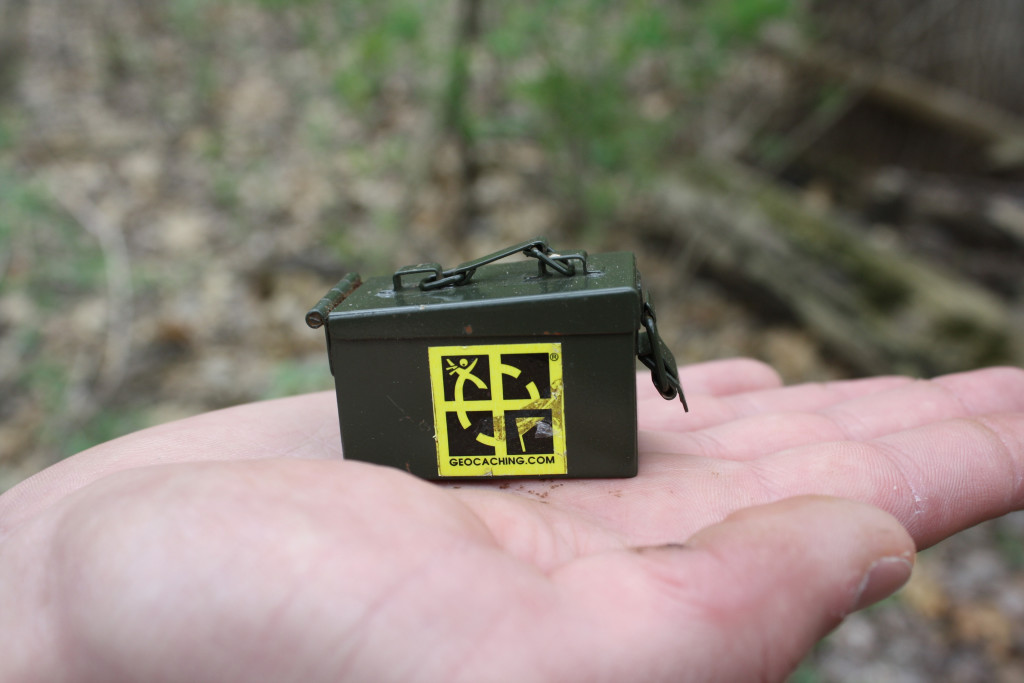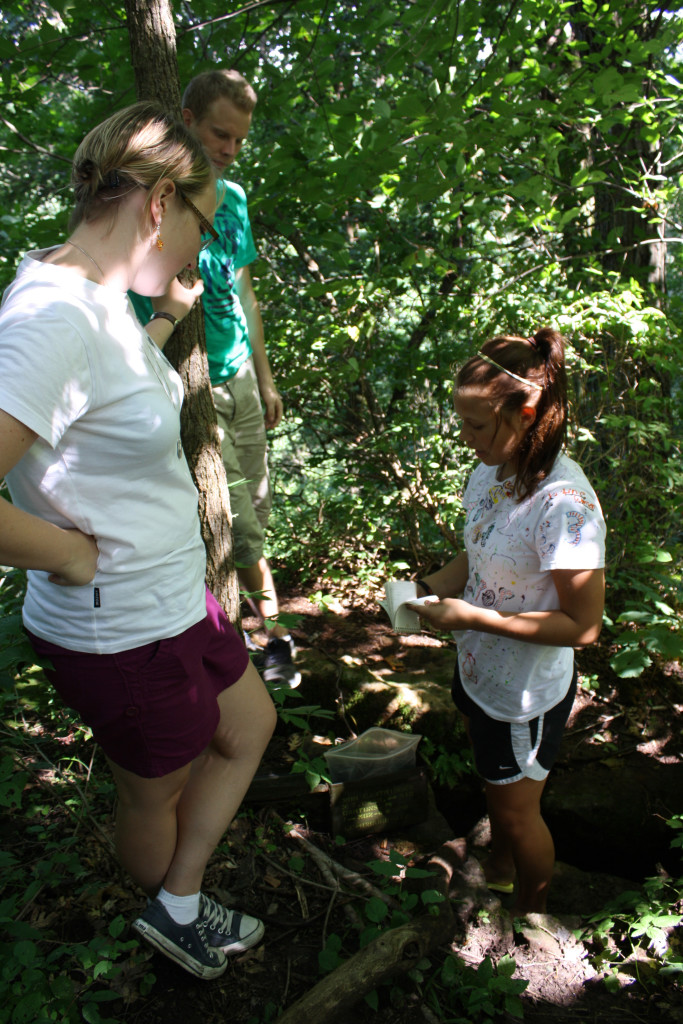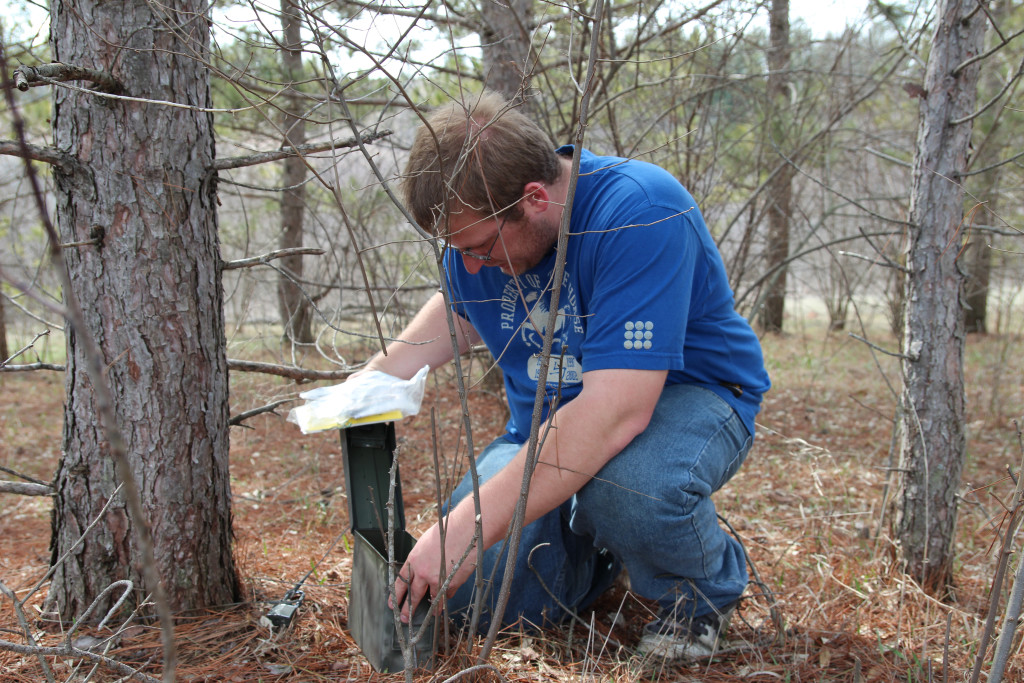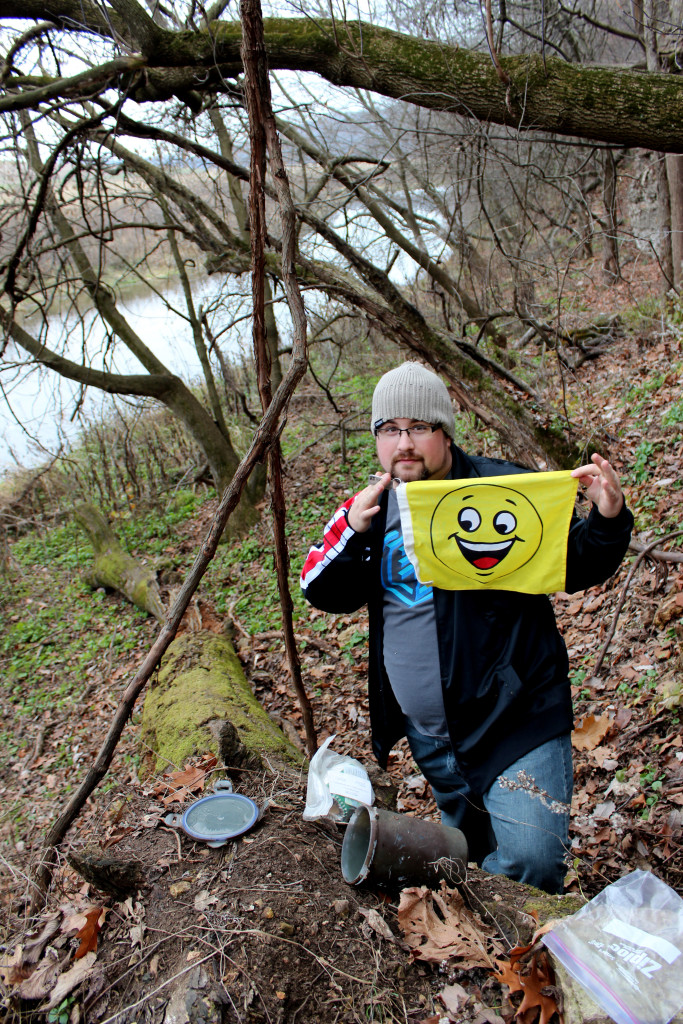Geocaching may seem like a foreign word, but to many it means a modern day treasure hunt game. And, the best part is, it can likely be found in your hometown.
Using GPS coordinates and a website dedicated to the activity (geocaching.com), you can track down containers of varying sizes on public property. These containers can be as big as a larger ammo container and as small as the head of a bolt. The website tells you which size of container you should be looking for. Inside, the container will always have a piece of paper and, when you find the container, you should sign that you found it. Some of the larger geocaches will have trinkets inside called swag. If you want to take something from the geocache, just leave a different item in its place.
Geocaching is intended to get people outdoors, exploring nature and sharing the beauty and history they find. Many of the caches are located at historical markers, state parks and naturally beautiful locations. It is important that seekers take care of the property the cache is on and remove all litter as well as try to avoid making a path. Only those with the coordinates should be able to find the geocache in order to keep it hidden from others who may remove or damage the container.
Remember, some of the caches are very creatively hidden, whether it’s a good location or a different type of container. It may be a challenge to find it. Bringing a friend along helps; two sets of eyes looking makes the task easier and makes it more of a game.
Geocaching is appropriate for all ages. Caches are not supposed to have any vulgar content. If you find any, report it to the cache owner. There are millions of geocaches worldwide and probably a couple of hundred within 50 miles of you at any time.
Geocaching is a fun group activity. You can race to see who can find more, or you can stop and enjoy the view. The important part is to get outside and explore.
For the history behind the activity, go to https://www.geocaching.com/about/history.aspx.
How To
- Go to geocaching.com.
- Create an account and/or log in. Note, there is a one-time $10 fee to get the geocaching ap on your phone or mobile device.
- Click the “Play” tab and click “Find a Geocache.”
- Type in a zip code or city name, or click “find nearby caches.”
- When the results come up, click “Map these Geocaches.”
- There will be several different symbols that are shown in your search. The green boxes are typical geocaches with a simple format to find them (enter one set of coordinates and it will lead you to the container). The yellow boxes are multi-caches which require several coordinates to discover the container (you find a container with instructions at the first set of coordinates and then either solve a puzzle or follow the coordinates given at that container to find the next one. There may be many containers to find to get one log to sign.) If you’re lucky enough to have a yellow smiling face, that means you’ve already found that cache. There are other uncommon symbols that are further explained on the website.
- Click the symbol for the cache you want to find. It comes up with a small description box. If it’s the one you want (sometimes they’re close together and it is difficult to choose the exact one you wanted), click the link on the name of the cache and it will open another page with much more information. Read through it, but make sure you notice the difficulty, terrain and size of the cache, all of which is located at the top of the page. Read through the instructions and get a better idea of what you’re looking for. Some caches have a lengthy article about the history of the area or instructions for finding the container; others are simply “Good luck and have fun!”
- At this point, instructions may vary depending on how you’re viewing the geocache. On a computer, you can copy down the coordinates and type them into your handheld GPS device. From your phone or iPad, there should be an option to “Navigate” to the cache and you can switch back and forth between the compass and map option.
- When you find the cache, write your log-in name on the sheet inside the cache, then go to the website and log that you found it. You must do both for it to officially count on the website. The cache owner can check the paper log and compare it with the website and remove those who haven’t logged both. Most will use the letters TFTC to mean “Thanks For The Cache” if they enjoyed finding it. You can leave a longer message, too. Try not to leave any information that will make it too easy for the next person to find. If you were unable to find the cache, but feel that you were in the right place and it just wasn’t there, you can log that you didn’t find it. Sometimes several people unable to find a cache means that the owner will need to determine if it is still there or if it has been stolen or damaged.
Tips/Tricks
-It’s always a good idea to bring a pen or pencil with you. Many of the caches contain writing utensils, but weather takes a toll on their functionality. The smaller caches don’t typically have space for a writing utensil.
-Wear long pants and comfortable shoes. There will be some walking and many of the caches are off the beaten path.
-The caches are hidden, not buried, so digging should not be necessary.
-Don’t go for the obvious spot. Once in a while it will be that easy, but most of the time it is a little more challenging to find.
-Take a backpack with you on longer hikes; this allows your hands to be free to search all surfaces and you’re able to bring water and other supplies.
-Follow all posted signs. If a park wants you to stay on the path, do so as long as possible. If a sign says no trespassing, there must be another way to get to the container and you should not go on private land to access it.



